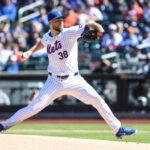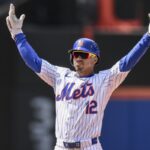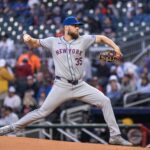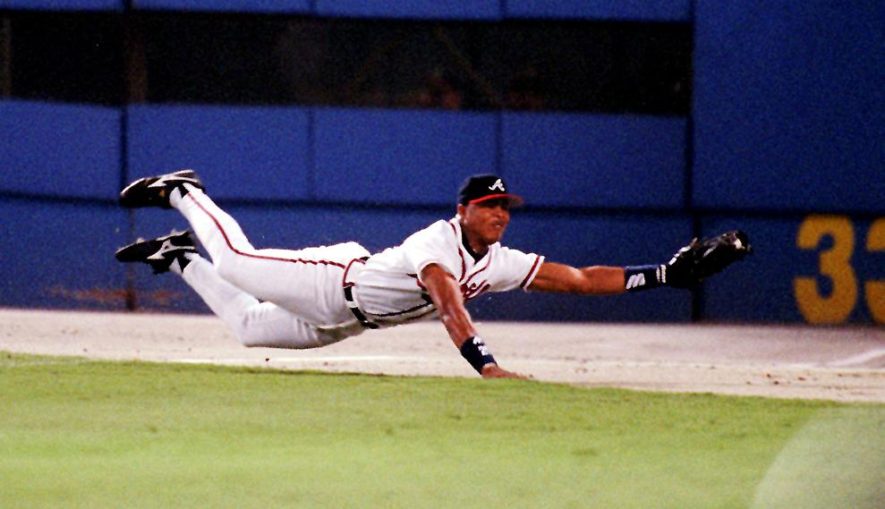
Hall of Fame voting season is in full swing, and thanks to the inestimable work of @NotMrTibbs, we have a good idea of how this year’s final ballot is going to shake out.
Twitter user Ryan Thibodaux has been tracking writers who make their Hall of Fame ballots public prior to the late-January announcement for a decade now, meaning that there are hardly any surprises on induction day anymore. As of right now, about 41 percent of ballots have been made public, and even more will become public over the next week.
There are very few surprises at the top of the ballot: Mariano Rivera and Roy Halladay are both virtual locks for enshrinement in their first years on the ballot, as is Edgar Martinez in his last. It’s looking increasingly like Mike Mussina will join them in the Class of 2019 as well.
But towards the middle and back ends of the ballot are a few players with support numbers that are a little bit surprising, to say the least. In their eternal wisdom, the baseball writers have shorted some players with stats and achievements making them arguably deserving of more support, and others who arguably deserve less. Here are four players that satisfy both of those categories.
Let’s start with the under-supported:
Andruw Jones
The sudden decline of Jones’s career after his age-32 season has made a lot of people forget how dominant of a player he was early in his career. From 1997 through 2007, Jones averaged 33 home runs, 12 steals, and a 114 OPS+ per season, while simultaneously managing to be the best defensive center fielder in the game.
From 2002 through 2007, Jones saved 67 defensive runs — 28 more than the next best center fielder — and posted a dWAR more than double the second-best at that position. It’s no wonder he was voted a Gold Glove award winner ten years straight.
If defense-first guys like Bill Mazeroski and Ozzie Smith belong in the Hall of Fame, so does Jones. He has far superior offensive numbers compared to them. But despite these credentials, Jones has appeared on just 8.3 percent of ballots in what will be his second year as a Hall candidate.
Instead of planning for a Cooperstown placque, Jones will be fighting for his candidacy’s life; he will need to appear on at least five percent of ballots to remain a candidate in 2020.
Fred McGriff
Fred McGriff has the same number of home runs as Lou Gehrig, and more home runs than recent Hall of Famers Chipper Jones, Jeff Bagwell, and Vladimir Guerrero. Had it not been for the 1994-95 MLB player’s strike, McGriff would likely be in the 500-homer club — given that he was robbed of about 70 games and need just seven more dingers to get there.
But McGriff will finish this Hall of Fame season — his tenth and final year on the ballot — short of the 75 percent threshold required for enshrinement.
“The Crime Dog” has appeared on just 35.5 percent of the public ballots released so far. This figure comes despite having credentials that should merit, at the very least, some serious Cooperstown consideration. McGriff had at least 20 home runs in 15 of 16 seasons from 1987 through 2002, and hit 19 in the one season he failed to hit 20.
McGriff also posts an impressive .284/.377/.509 career slash line with a 134 OPS+ to go along with his elite power numbers. McGriff’s OPS+ ranks higher than Hall of Famers Orlando Cepeda, Billy Williams, Tony Gwynn, and Wade Boggs.
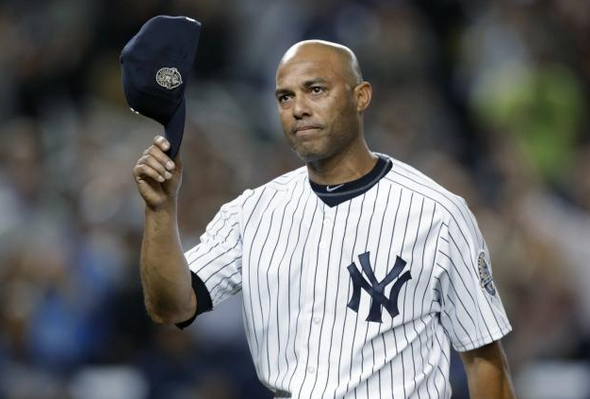
Mariano Rivera
This might seem like an odd choice for this list, given that Rivera is a lock to be inducted to the Hall this year — his first on the ballot. He has appeared on all of the public ballots cast so far, so Rivera has a strong chance of being inducted into the Hall of Fame with the highest vote percentage of any player ever.
But inevitably, the ninth inning’s G.O.A.T. will fall short of the unanimous approval that he has earned. Red Sox writer Bill Ballou has already written a 1,500-word screed explaining why he is not voting for Rivera, although he ultimately abstained from voting. Read it at your own risk.
So while Ballou’s abstinence has preserved Rivera’s unanimous public support, a few anonymous writers will inevitably follow Ballou’s lead by not voting for him. Especially given the fact that no player has ever received a unanimous vote into the Hall of Fame.
If there were any player especially deserving of being the first unanimous Hall of Famer, it’s Rivera, who is unquestionably the greatest closer of all time. There is no way that the Yankees would have won five World Series with an inferior closer. But instead of giving Rivera unanimous support, a few anonymous writers will likely spoil the day by instead voting for guys like Aaron Sele and Jacque Jones, who actually received one Hall of Fame vote each in 2013 and 2014 respectively.
Curt Schilling
Curt Schilling should have been inducted into the Hall of Fame years ago. That he’s even still on the ballot is absurd.
While his traditional statline (216-146 with a 3.46 ERA and a 127 ERA+) is about as borderline as it gets, Schilling’s status as the best big-game pitcher of his era should tip the Cooperstown scales in his favor. Schilling was 11-2 with a 2.23 ERA in postseason games, including a 4-1 record with a 2.06 ERA World Series games.
If it weren’t for Schilling’s clutch performances, the Curse of the Bambino may have never ended, and the Diamondbacks would still be trophyless.
Schilling, who is in his seventh year on the Hall of Fame ballot, currently appears on 73.4 percent of public votes — which would be far higher than the 51.2 mark he received on the final vote last season.
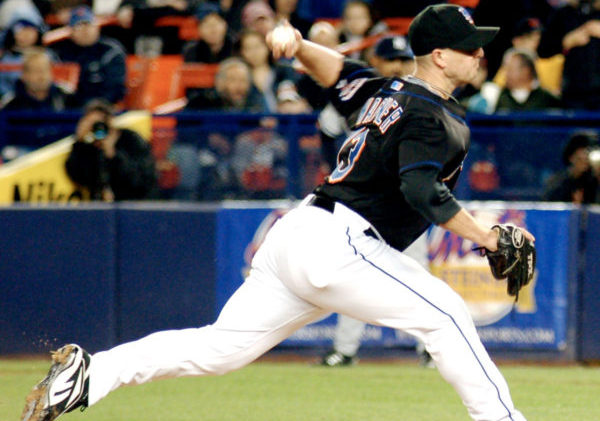
Now, here are four guys who are over-supported:
Billy Wagner
Wagner surprised some observers by getting double-digit support on his first year of eligibility– on a crowded ballot, no less. He posted an ERA+ below 140 just once in his 16 MLB seasons, and his career mark of 187 isn’t too far behind Mariano Rivera’s record-setting 205.
There’s no question that Wagner was one of the most underappreciated players of his day. But there are just seven closers who have made the Hall of Fame: Hoyt Wilhelm, Rollie Fingers, Bruce Sutter, Goose Gossage, Lee Smith, Dennis Eckersley, and Trevor Hoffman.
When Mariano Rivera is inducted this year, that will make it eight. There is no position in baseball with a higher Hall of Fame bar than the closer, which means that Wagner falls short on this one — especially given his unsightly 10.03 career postseason ERA.
Mike Mussina
“The Moose” appears on 81.7 percent of public ballots, meaning he has a real chance of being inducted into the Hall of Fame this month. While it’s indisputable that Mussina was one of the greatest pitchers of his day, is it fair to say that he belongs in the same fraternity as Randy Johnson, Greg Maddux, and Pedro Martinez?
Unpopular opinion here, but no.
Mussina’s ERA+ of 123 is fantastic, but only makes him a borderline Hall of Famer. He finished in the top five of AL Cy Young voting just five times in 18 seasons, but never won the award. And Mussina’s 7.11 strikeouts per nine innings figure ranks just 18th among pitchers with at least 1,500 innings over the course of his career — behind Javier Vazquez, Chan-Ho Park, and Andy Benes.
Essentially, Mussina is Curt Schilling without the iconic October moments. And if Schilling hasn’t gotten the Hall call yet, neither should Mussina.

Omar Vizquel
Omar Vizquel has received a surprising amount of support from the BBWAA. In just his second year on the ballot, Vizquel appears on 36.7 percent of the publicly-released ballots, meaning he has a real chance of getting inducted into Cooperstown at some point over the next few years.
If Vizquel were to be inducted, he may just be the worst offensive player to ever be enshrined in the Hall of fame. The longtime Indians shortstop batted just .272/.336/.352 (!) with an 82 OPS+ over the course of his career. These numbers are hardly even average, let alone Hall worthy. Proponents of Vizquel’s nomination point out his spectacular defense as the reason he should be in, and compare him to fellow light-hitting defense-first shortstop Ozzie Smith.
But Smith was a far superior player on both sides of the ball compared to Vizquel. Smith won 13 consecutive Gold Gloves and received MVP votes six times. Vizquel, on the other hand, only received MVP votes one time in his entire career: In 1999, when he finished 16th.
While Vizquel is unquestionably one of the best defensive players in MLB history, his subpar offense should preclude him from the Cooperstown conversation. At least Andruw Jones was a star hitter.
Andy Pettitte
Had Pettitte played for the Royals, nobody would even bat an eye at his candidacy. But since he played on the late-90s/early-00s Yankees dynasty, his candidacy stands a far better chance of standing — albeit still an uphill battle.
Pettitte’s lifetime ERA of 3.85 and ERA+ of 117 both indicate an above-average career, but not an all-time great one. Far better pitchers than Pettitte have been five percented in their first years eligible. Kevin Brown, for example, posted career ERA’s of 3.36 and ERA+ of 127 over the course of his 20-year career — much of which came in the same era as Pettite’s — and led the league in ERA twice. He received 2.1 percent of the vote in 2011 and nobody even cared about it.
This year’s ballot also features Roy Oswalt. He has a 3.36 ERA and an ERA+ of 127 — marks far better than Pettitte’s. He has 1.2 percent of the vote. Let’s not pretend that Andy Pettitte is an all-time great player because he pitched for all-time great teams.






